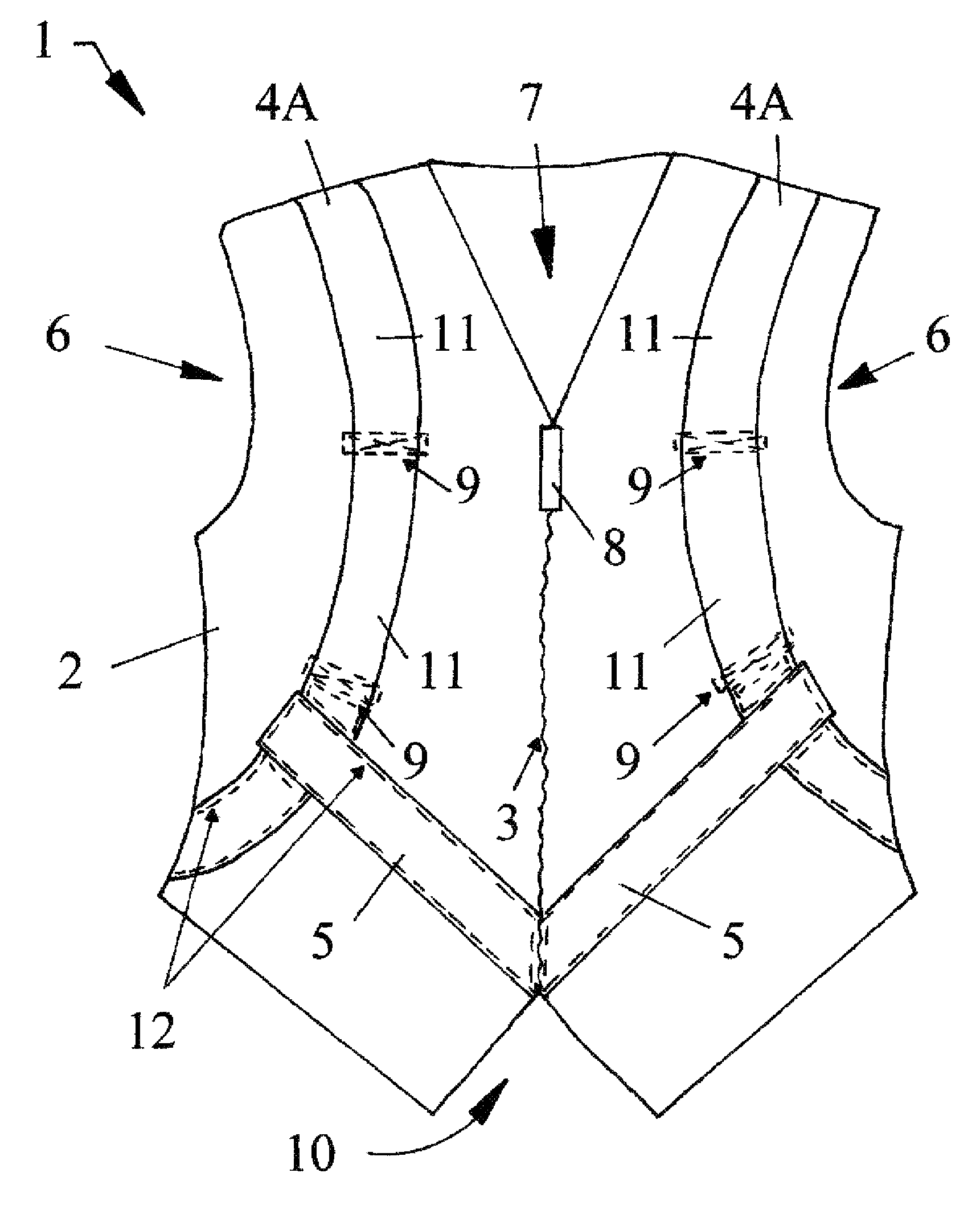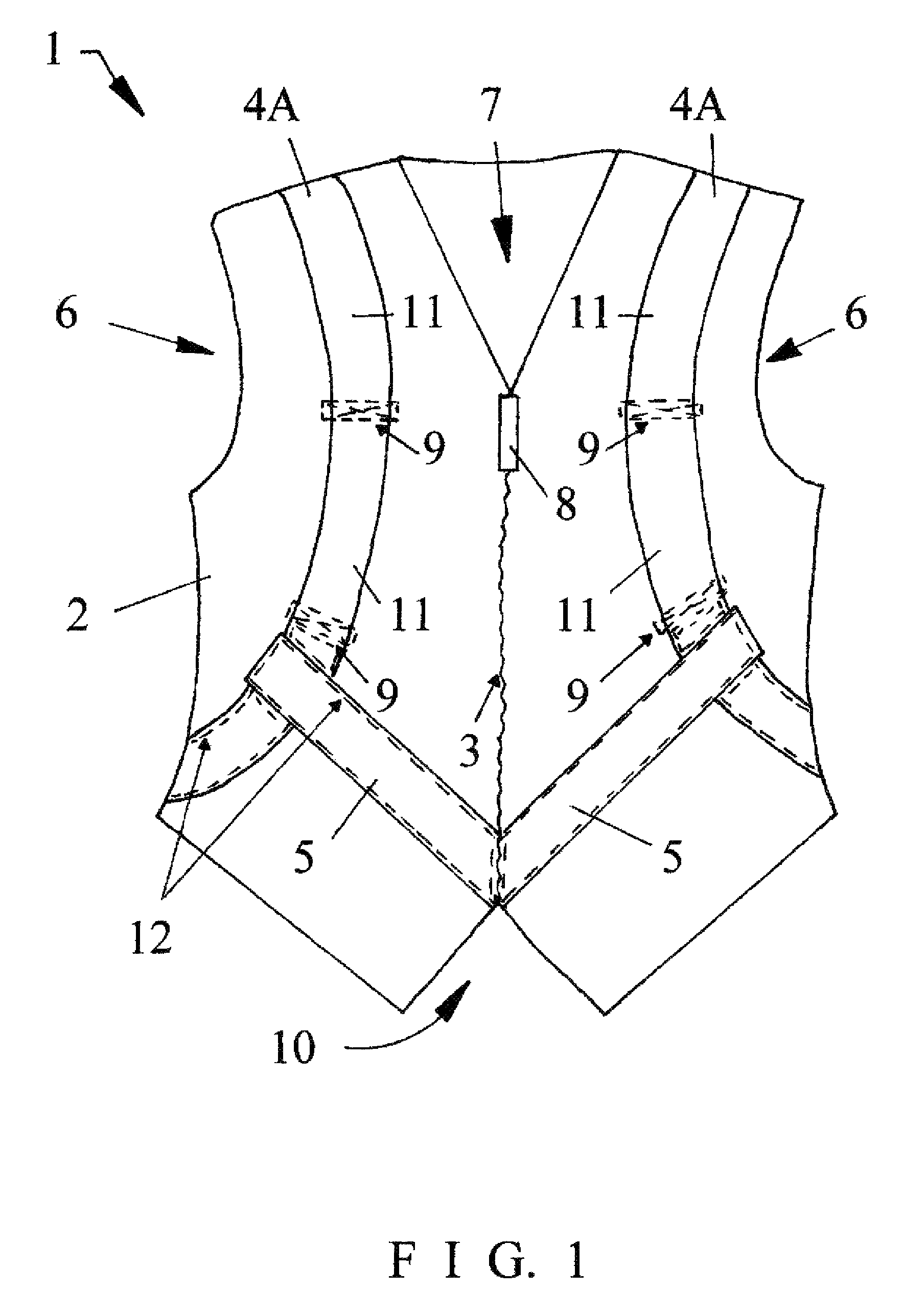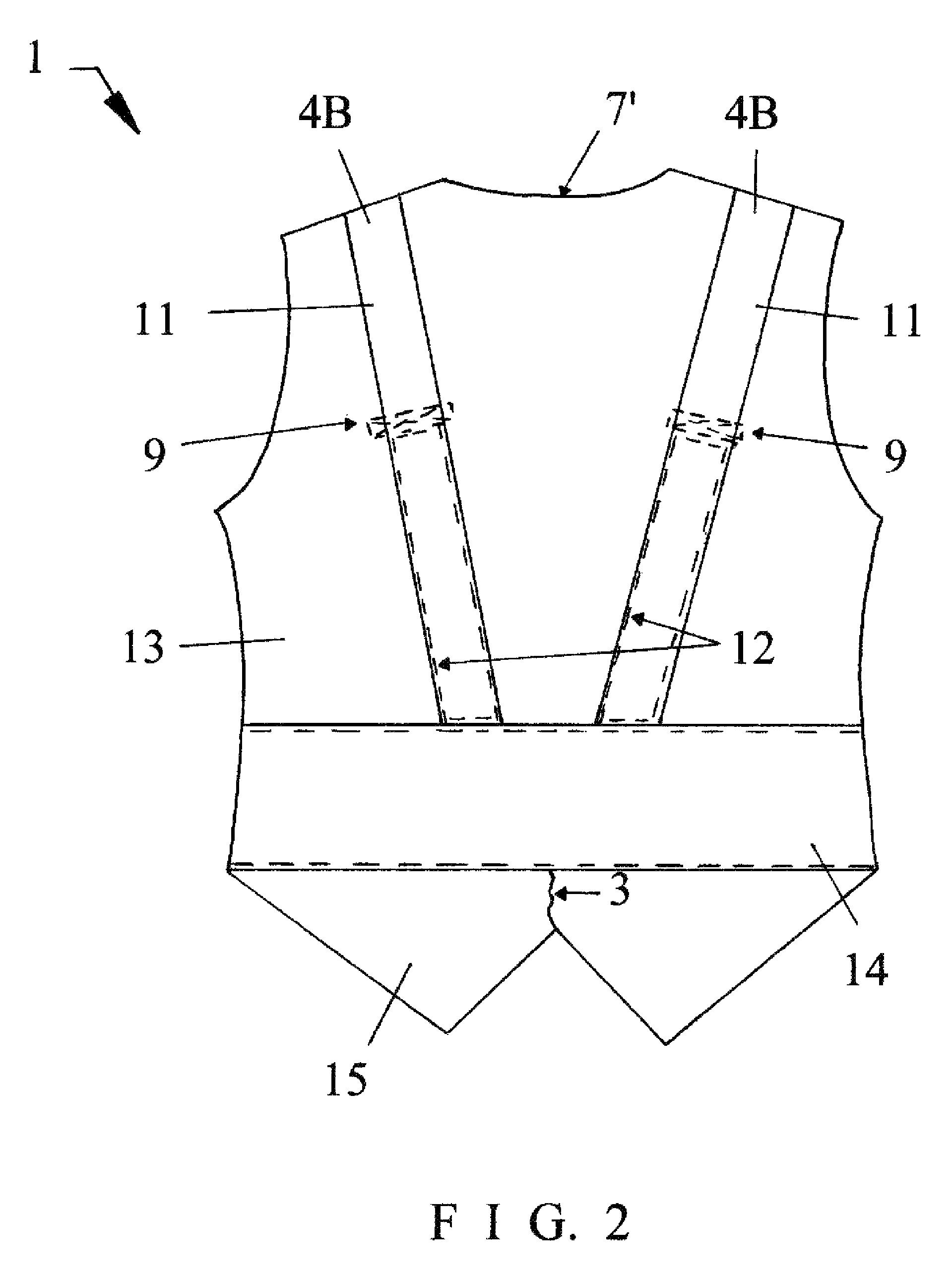Manual transfer vest
a patient transfer and vest technology, applied in the field of patient transfer systems, can solve the problems of accelerating death, poor foot care, high rate of falls among older american men and women, etc., and achieves the effect of easy washing, high comfort and safety, and well-designed
- Summary
- Abstract
- Description
- Claims
- Application Information
AI Technical Summary
Benefits of technology
Problems solved by technology
Method used
Image
Examples
Embodiment Construction
[0037]The preferred embodiments of the present invention comprise a manual multi-functional patient transfer vest device (such as the most preferred vest 1 shown in FIG. 1-6) which has patient interfaces, such as but not limited to, the non-adjustable hand-grip lift components 11 shown in FIGS. 1-6, that can be employed for transferring moderately mobility-challenged patients (such as the user 16 shown in FIGS. 4-6). In one preferred embodiment, the multi-functional patient transfer vest device is a one-piece, sleeveless vest, with zippered or hook-and-loop front closure means, that fits snugly and covers the patient's upper back, mid-chest, and waist areas, but does not interfere with a patient's use of a commode. The front of the multi-functional patient transfer device has four sturdy and durable vertical, non-adjustable hand-grip lift components 11, with two hand-grip lift components 11 secured bilaterally to the front vest material 2 and extending across the clavicle / upper ches...
PUM
 Login to View More
Login to View More Abstract
Description
Claims
Application Information
 Login to View More
Login to View More - R&D
- Intellectual Property
- Life Sciences
- Materials
- Tech Scout
- Unparalleled Data Quality
- Higher Quality Content
- 60% Fewer Hallucinations
Browse by: Latest US Patents, China's latest patents, Technical Efficacy Thesaurus, Application Domain, Technology Topic, Popular Technical Reports.
© 2025 PatSnap. All rights reserved.Legal|Privacy policy|Modern Slavery Act Transparency Statement|Sitemap|About US| Contact US: help@patsnap.com



